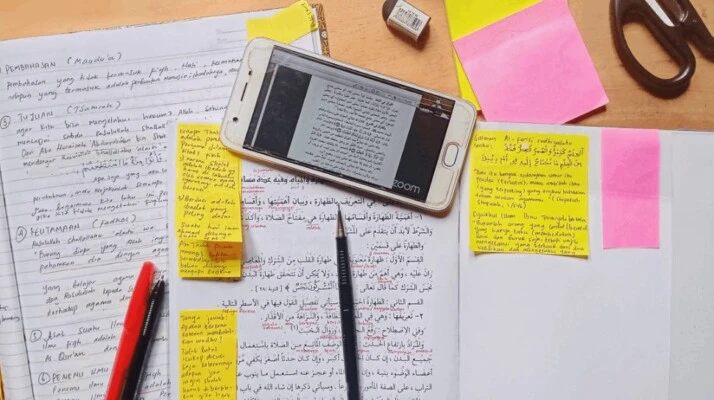When it comes to paraphrasing, no letter is more important than the letter ‘R’. The ability to paraphrase is so important to good essay writing. It’s so important that there is a system by which you can check if you’ve done it properly: the 4 r’s of paraphrasing.
These are Read, Restate, Recheck and Repair. We’ll look at each stage of this process below.

What Is Paraphrasing?
Paraphrasing is one of the methods you can use to prevent plagiarism. It is the process of recreating the author’s original words, ideas, and thoughts.
The difference is, this is done in your own words. This is a key component of good academic writing that cannot be overlooked.
What Are the 4R’s of Paraphrasing
1. Read
This is the first of the 4 r’s of paraphrasing.
Every bit of text has a message it wants you to convey. If you don’t understand what the author is saying, you won’t be able to put it into your own words. Here are some ways you can do that:
Don’t try to paraphrase large parts of the text. Instead, find the points that support your argument. Do your best to understand what the author is saying here.
Each bit of text will have a main point. Try to work out what those are. Once you identify the main points, you can begin to put them in your own words.
Certain parts of the text do not need to be paraphrased. Things like dialogue and poetry are always best quoted. However, others like large chunks of facts and figures are best paraphrased. Sometimes, essays come with limits as to the number of quotes you can include. In such a case, you can paraphrase.
2. Restate
Once you have a handle on what the author is saying, you can begin to rewrite. As far as possible, you don’t want to spin.
Spinning is when you mold an author’s words so that they say what you want to say, instead of what they originally said.
This often goes wrong, as the author’s words are significantly different than the ones you replaced. The best paraphrasing in your work takes the meaning of the original sentence and places it in your own words.
To keep the author’s original intent, there are several things you can do.
For example, you can structure there words differently, using synonyms. You can also keep the main idea, while introducing new ones of your own.
When you restate, be careful not to do paraphrase quotes from the text and put your rephrased words as the author’s quote. That a different kind of academic mistake.
3. Recheck
You’ve made your list of paraphrased points, and now you’re checking it twice. At this stage of the 4 r’s of paraphrasing process, you check back against the original text. This is to ensure you’ve accurately captured the original idea.
A balance must be struck here. You want to rephrase the content sufficiently in your own words, but you also want to keep the original meaning.
Once you’ve done this, it’s on to the revision process.
4. Repair
This stage is about dotting your i’s and crossing your t’s. You are ensuring that you’ve kept the original idea. But you are also making sure it’s in sufficiently different words.
Do not forget to include your citations. This is important. Otherwise, you’d have gone through all of this trouble for nothing and end up accused of plagiarism.
Wind up the entire process by following the citation style requested by your professor. The different styles (MLA, APA, Chicago etc) require different citations processes for paraphrased material.
To Wrap Up
Paraphrasing is necessary for any student to know.
Readers must remain engaged with their work and draw back on their own thoughts in order to understand what they read.
The ability to make educated decisions on the topic, paraphrase and cite evidence correctly are essential for the success of the student.
Without paraphrasing the skill essay writing won’t be effective. Using the 4R’s, the skill becomes more understandable and effective in the student’s work.
Explore All Paraphrasing Tool Articles
Advanced & Effective Paraphrase Simplify Tool
The paraphrase simplify tool is designed to paraphrase and simplify your text effectively. This tool can be used for in-depth…
What Is a Paraphrase Citation?
When you paraphrase, many people think you don’t have to give a citation. Understand that because you have used someone’s…
Paraphrasing Vs Summarizing: What’s the Difference?
Paraphrasing and summarizing are two similar activities, but they are not the same. To understand the difference between paraphrasing vs…
The Best Paraphrase Tools: A Review
When it comes to paraphrase tools, there are so many to choose. This is why we decided some paraphrase tool…
The Best Paraphrasing Hacks From Students Themselves
Did you have a tough concept that you had a lot of trouble understanding? Paraphrasing helps with that. But it…
What are the Best Paraphrasing Tool to Download
Paraphrasing is the process of rewriting or rephrase a sentence without changing its meaning. A paraphrasing tool allows you to…
